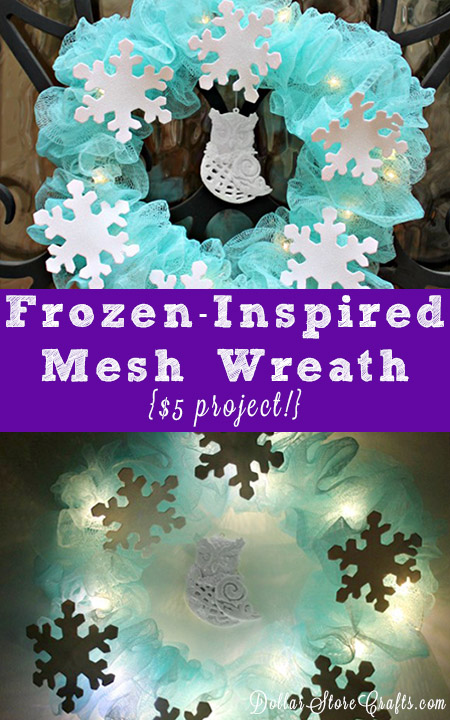
Making goo (also known as slime, gak, or flubber) is a simple process. You only need three ingredients, and this recipe results in a weird, stretchy substance that entertains kids for quite awhile. This is a fun experiment for kids of all ages — I found the recipe at Steve Spangler science. Fall is a great time of year to stock up on one of the principle ingredients: white glue. School supply sales are awesome! Of course, you can buy white glue at the dollar store all year around for the low price of $1, too.
My sons and I made a video tutorial. This project really is easy enough for a four year-old to do (with supervision, of course!)

Project Estimate:
- 8 oz (1 big bottle or 2 small) White glue, $1
- 1-1/2 cups Water, on hand
- 1 teaspoon Borax, $4 for a box
Total: $5

To Make:
1. Pour glue into a bowl.
2. Fill glue bottle with warm water and shake to get all the glue out of the bottle. Pour into bowl. Add food coloring if desired.
3. Add 1 teaspoon Borax to 1/2 cup of warm water and stir.
4. Pour Borax-water solution into bowl and mix. Long strings will immediately form. Continue to mix until smooth.
5. Store in a zip-top bag or sealed container.

A note about Borax:
Borax is the only “weird” ingredient in the list, but it’s easy to find it in the laundry section of your local grocery store. Unfortunately, you probably won’t find it at the dollar store, but you go to the grocery store still, don’t you? You only need a teaspoon of Borax for this recipe, but you can use the rest of the Borax to make your own laundry detergent and DIY dishwashing detergent.
Is Borax Safe?
Some people aren’t sure if Borax is safe for kids. In my research, I have discovered that Borax is generally safe for use in recipes like Goo. Obviously, you don’t want to let your child eat the Borax or the Goo, but “most likely, the skin and respiratory irritation that borax causes is due to the structure of the substance (many sharp edges). Table salt, or sodium chloride, causes irritation by the same method.” Of course, if you are not comfortable with letting your child use a product that includes Borax as an ingredient, you should skip this project. Here’s the MSDS Safety Sheet for Borax.
Steve Spangler says:
Science Smarts starts with proper adult supervision and common sense. Read all the directions before you begin any experiment and if you aren’t sure about something, ask someone who knows!
- Don’t put any chemical near your mouth, eyes, ears, or nose. The incorrect use of chemicals can cause injury and damage to health…
For example, would you consider water to be a safe chemical? Sure it’s safe… it’s water! But try reading the MSDS on water and you might be surprised. “FIRST AID: Call a physician, seek medical attention for further treatment, observation and support after first aid. Inhalation: Remove to fresh air at once. If breathing has stopped give artificial respiration immediately.” Sounds frightening… and it’s just water! If you request an MSDS on any product, make sure you understand what you’re reading before jumping to any conclusions. If you are concerned about a particular chemical contained in the product, seek the professional advice of an expert. Any chemical can pose safety concerns (yes, even water).
The best advice we can give parents, teachers or any adult supervisor is to read and follow the directions carefully. Look for phrases like “non-hazardous” or “not expected to be a health risk”. If you have any questions, pick up the phone and call. Most importantly, if an accident happens, seek help immediately.






28 Comments
Heather's Mom
My grandsons did a great job on the tutorial. The “goo” is fascinating. I’d like to see them play with it.
heather
@mom, Gideon (2 year old) won’t get near it. I think it’s because it defies his understanding of the universe and the way solids are supposed to behave!
Sarah
My mom and I used to sell this stuff at fairs/carnivals/festivals! Just a quick note: don’t make blue-colored slime. It sticks to your hands like all get-out! Yellow was the softest color, then orange/pink, then green, and blue just sticks for some reason. Weird.
heather
@sarah, thanks for the advice. I do remember that this left a little blue on our hands!
brandi scardina
Oh wow my husband is gonna love this haha. So when I started this video I turned up the volume and lil wayne was playing in the background and I couldn’t hear the boys talking and I was thinking to myself “what is this lady thinking” haha turns out I had forgotten to turn off my music player :/ anyway, cute tutorial and I think I’m going to make this today with my daughter.
heather
Your daughter will love it, Brandi!
Susan
Heather – This is one of my favorite activities as it only uses a few ingredients and kids will want to play with it for a long time. I even like squishing it and molding it. The pretty blue color is also a bonus. You can add a little glow powder in it for glow in the dark fun. Thank you for sharing!
Maylee
I forgot about this stuff! Thanks for the (adorable) tutorial on how to make it (your boys are hilarious). My toddler is going to go nuts!
Sarah in NYC
I used to make silly putty with elmer’s glue and liquid starch ( you can buy the starch in the laundry section of the supermarker)
Jennifer
Oy Heather, do you know what a popular mom I would be if I let my son make this? Hehe. Maybe soon. When his dad has a day off from work. :)
breanna
i learned about this a few weeks ago during a playdate and i’ll tell ya, i was just as captivated by it as the little lady was! it’s so strangely soothing to goop it around in your hands!
Trina
I love this. What a fun rainy day activity! I love knowing exactly what’s in it … no strange, unpronounceable chemicals. Thanks for the tutorial.
stephanie
what is borax
heather
@stephanie, You can find Borax in the laundry section at your grocery store.
Heather
I can’t wait to make this with my boys! haha! used to wash my hands with Borax soap when I was in elementary school. That’s the only powdered soap they used for hand washing in the bathrooms. He he he he. boy, I’m really showing my age.
Erica
Love this!! I plan on making this at our Sons birthday party Elmers glue is expensive. I would like to use dallor store stuff… Has anyone ever used cheap glue and not Elmers?????? Please any info would be great!!!
heather
@Erica, It will probably work with generic white glue.
gabriel
I used this recipe for my demonstrative speech and got an A+.
Amy
I tried this, but it didn’t work AT ALL!! It is just globs of gunk in the bottom of the bowl, with lots of pink (we used pink food coloring) water. We couldn’t get it to mix at all. Any suggestions?
heather
@amy: sounds like you should reduce the amount of water and just keep mixing!
Edwina
I made some of this stuff with our son one day. He loved it so much, he took it to show his Cub Scout leader. She asked me to make it with all the boys at our February Pack meeting which was also our Blue and Gold meeting. I took the guts out of blue and yellow highlighters and put them in two separate milk jugs of water to make blue and gold water. It worked great! The boys wanted green slime though so we had a short lesson on how to combine blue and “gold” slime to make green and split it among all the boys. Warning!! Don’t make this until you are ready for your meeting to break up. You will loose all the attention of the boys once it’s made! lol It went over really big and I even had several of the moms ask me for the directions.
Edwina
P.S. We used the cheap glue for our first batch we made at home and it worked perfectly fine but used the clear “bluish” glue for the cub meeting. I also substituted 1 oz of glitter glue to each batch of slime we made in either blue or gold glitter for the pack meeting. It worked really great for the clear green texture we are all used to with sparkles of both blue and gold mixed in. Once it was stored in the zip lock bag for several days, the glitter sank to the bottom of the mixture. We got it out of the bag and let our son play with it for a few minutes and it mixed right back in to the mixture. It’s lasted for several months since our son hasn’t played with it for a while.
cheyanne
This is useful now i know how to make goo . But i need Borax!!!!!!!